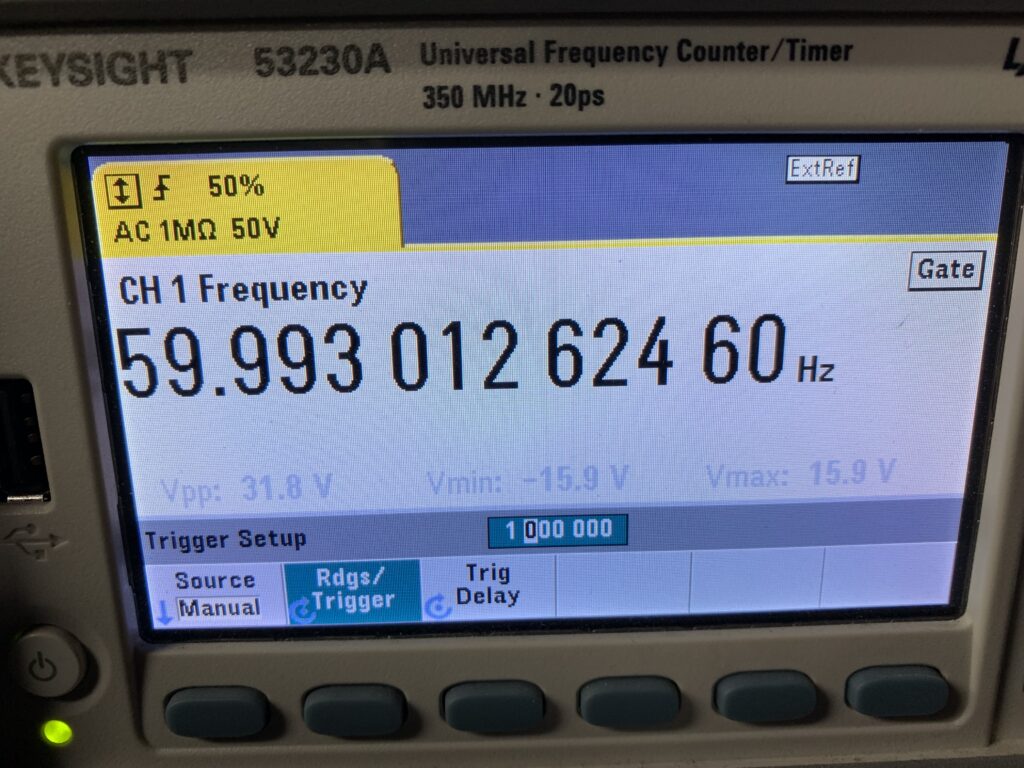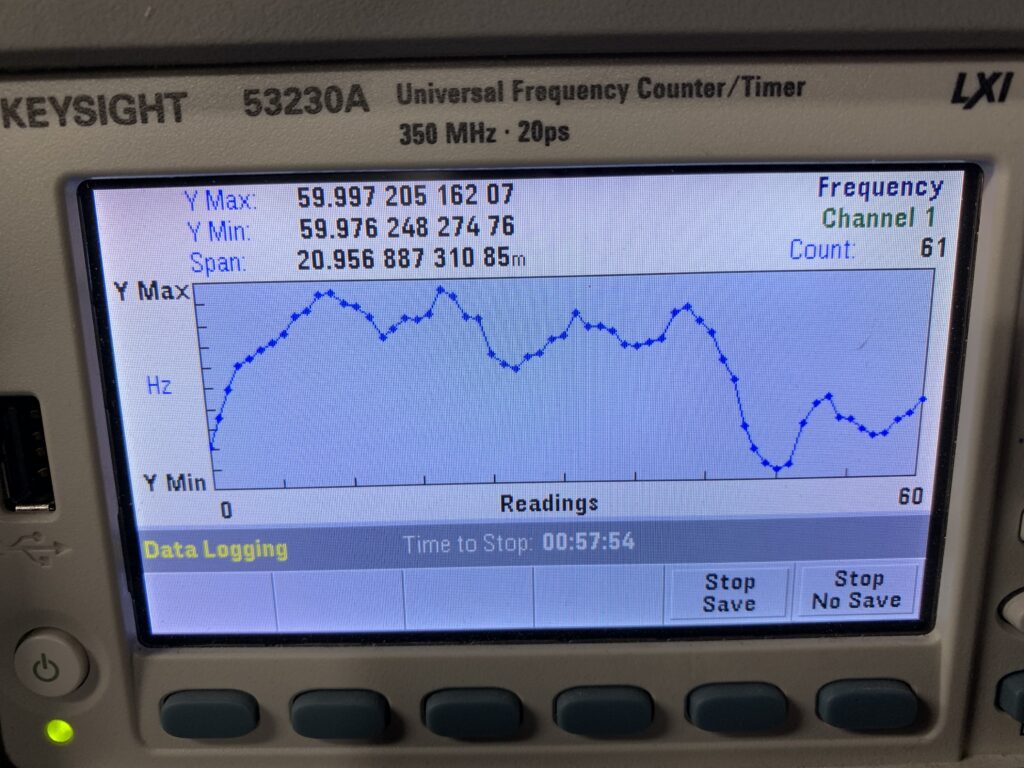Mains frequency in North America is specified at a frequency of 60Hz, however in reality that number varies up and down a small amount as load and generation balance on the power grid.
As generation exceeds load, physically the turbines and generators will speed up and result in a slightly faster frequency. Conversely as load exceeds generation the extra demand will slow down the generators resulting in a slightly lower frequency. These changes are regulated and dampened by careful control of capacity, and the physical inertia of many many tons of spinning steel in turbines and generators across the grid.
These factors are part of a fine balancing act the grid operators manage, as they tune generation capacity to meet demand. Over the long term the grid operators manage these variations to average out to 60Hz, but over the short term we can measure these variations.
In the context of the significant power outages in Texas, some discussions with a friend inspired me to measure the variations in my region. In my case, I’m part of the Western Interconnection, which is not directly associated with the grid in Texas, so my data is not relevant to events there, but is generally interesting to explore.
I used an old wall wart power adapter with an AC output, and fed it into my frequency counter (which is referenced on a rubidium standard) and set up 1 second sampling intervals. In this case this is a view of about 1 minute of samples at roughly 4:30 in the afternoon. We can see load varying a bit over the minute, and overall load appears to be slightly exceeding generation as the frequency is running slightly below 60Hz.


Running slightly slow in the afternoon is not at all uncommon, as people use more energy during the day, and especially in the evening as people return home and start heating/cooking/etc. During the night typically generation will slightly exceed demand as people are sleeping, and bringing the overall average out to 60Hz.
